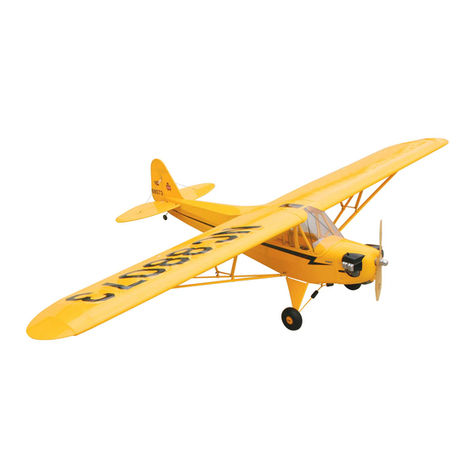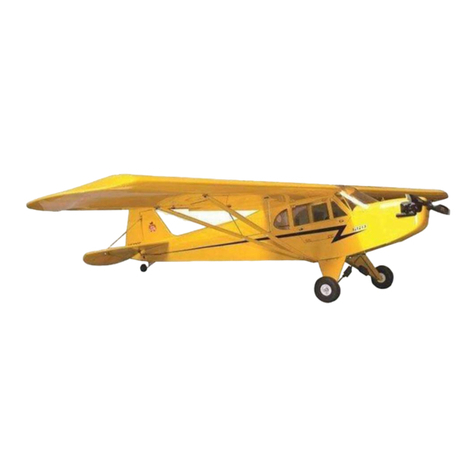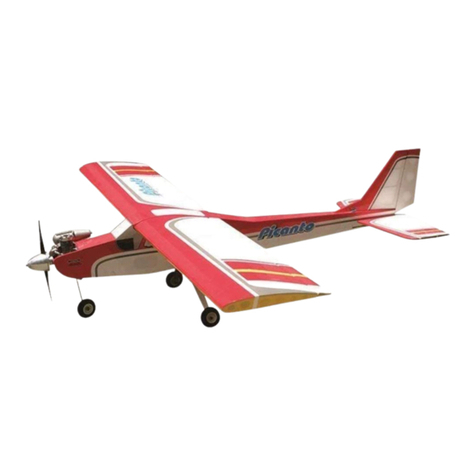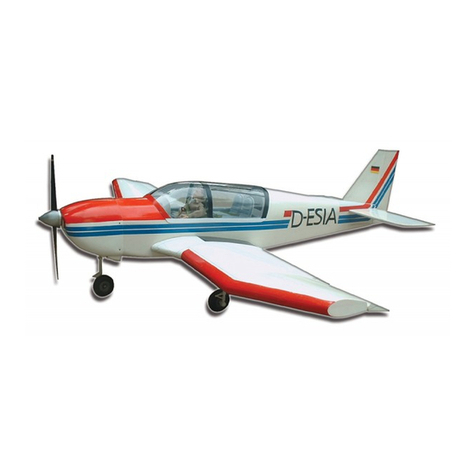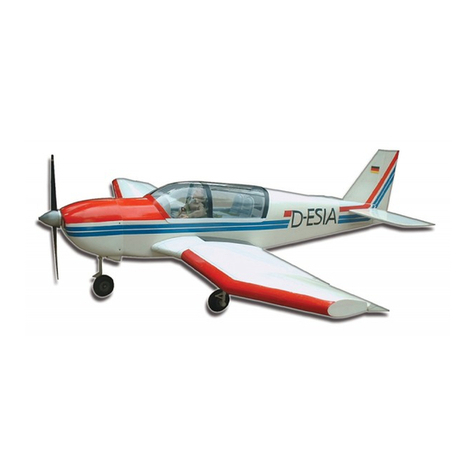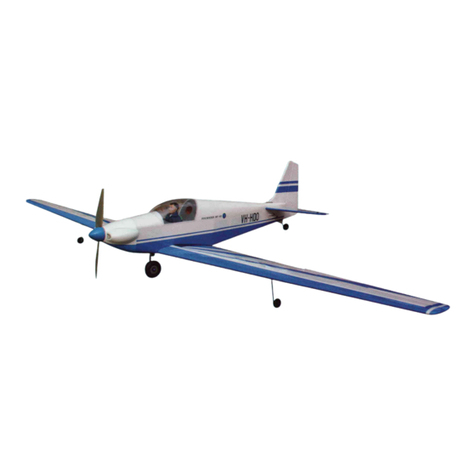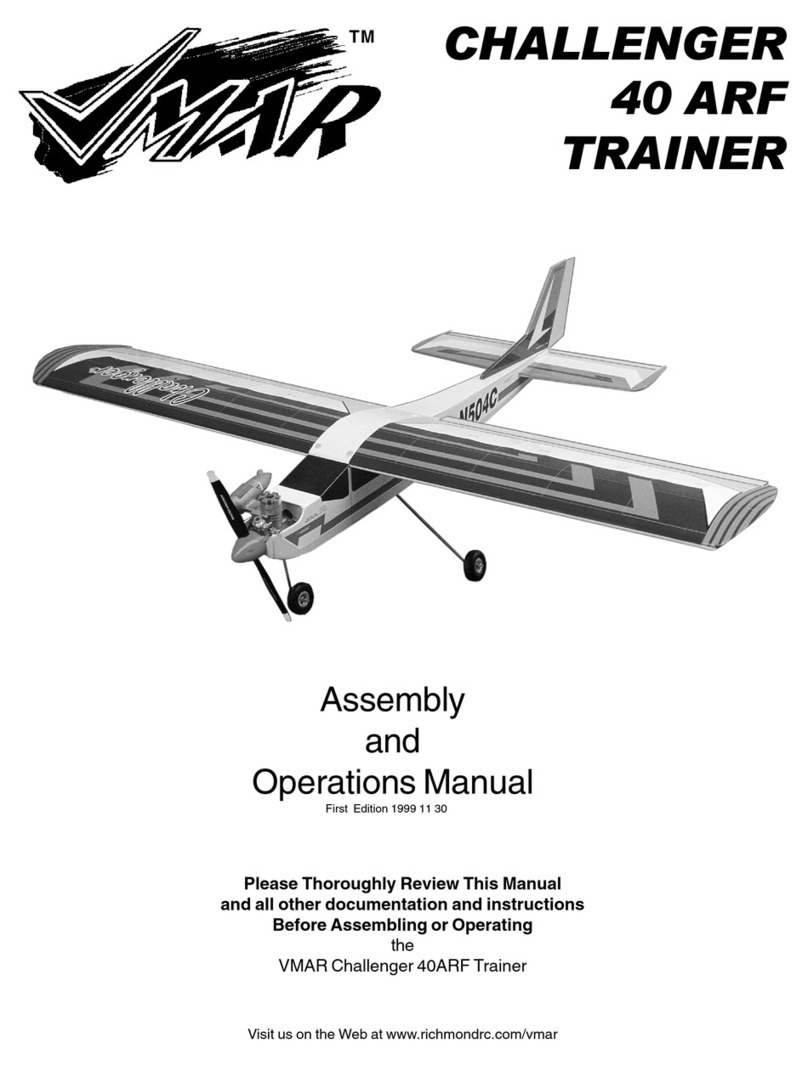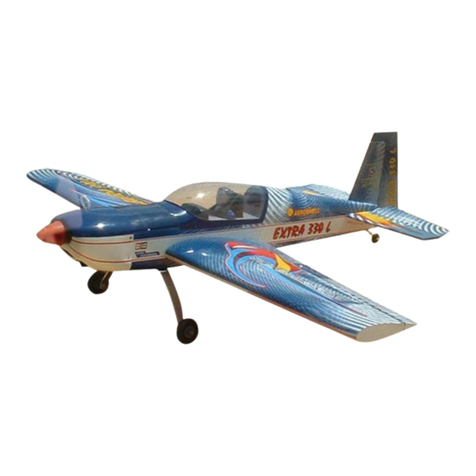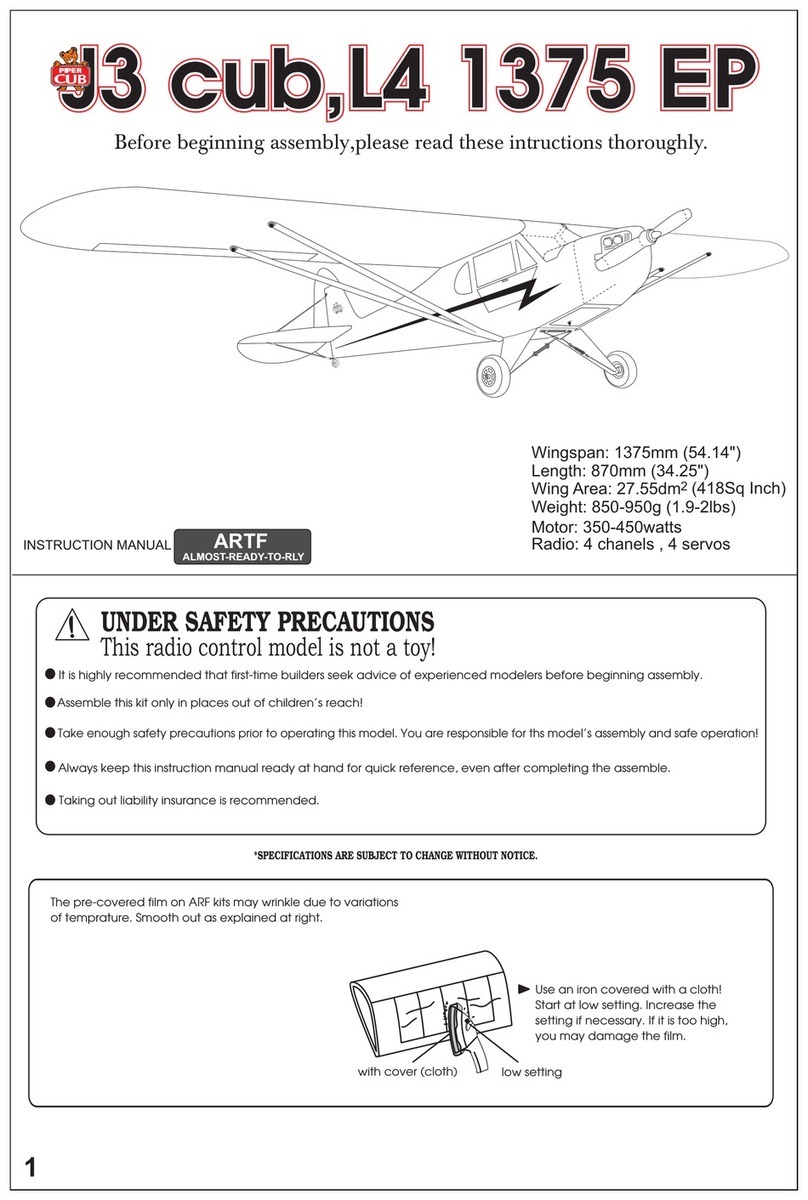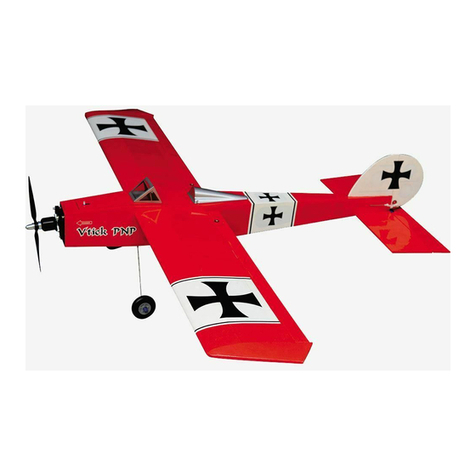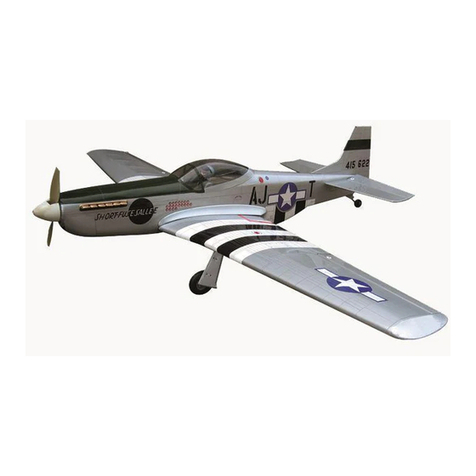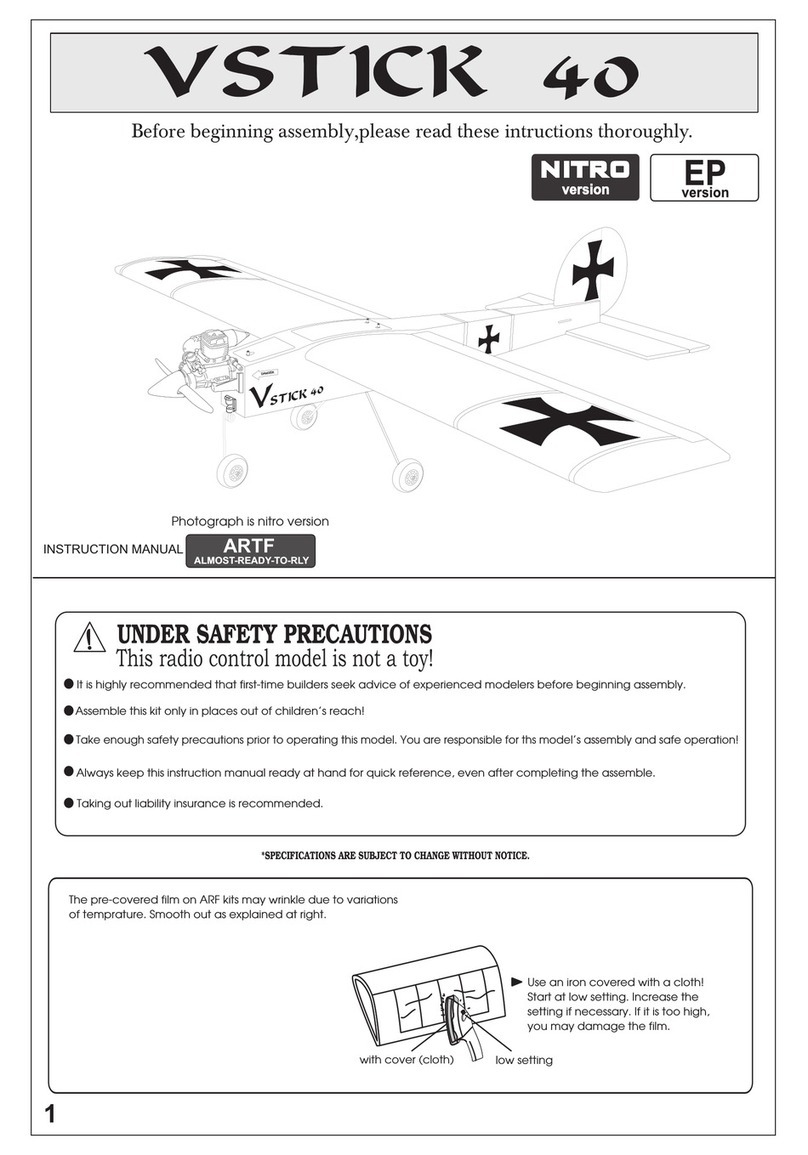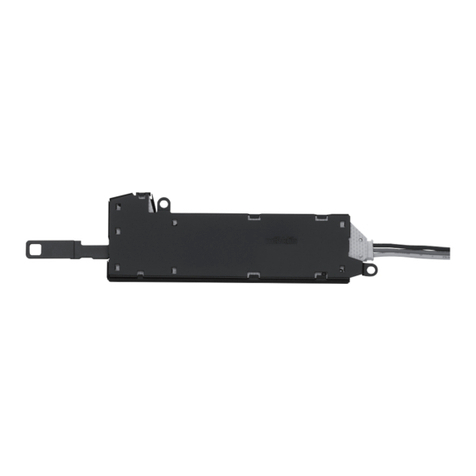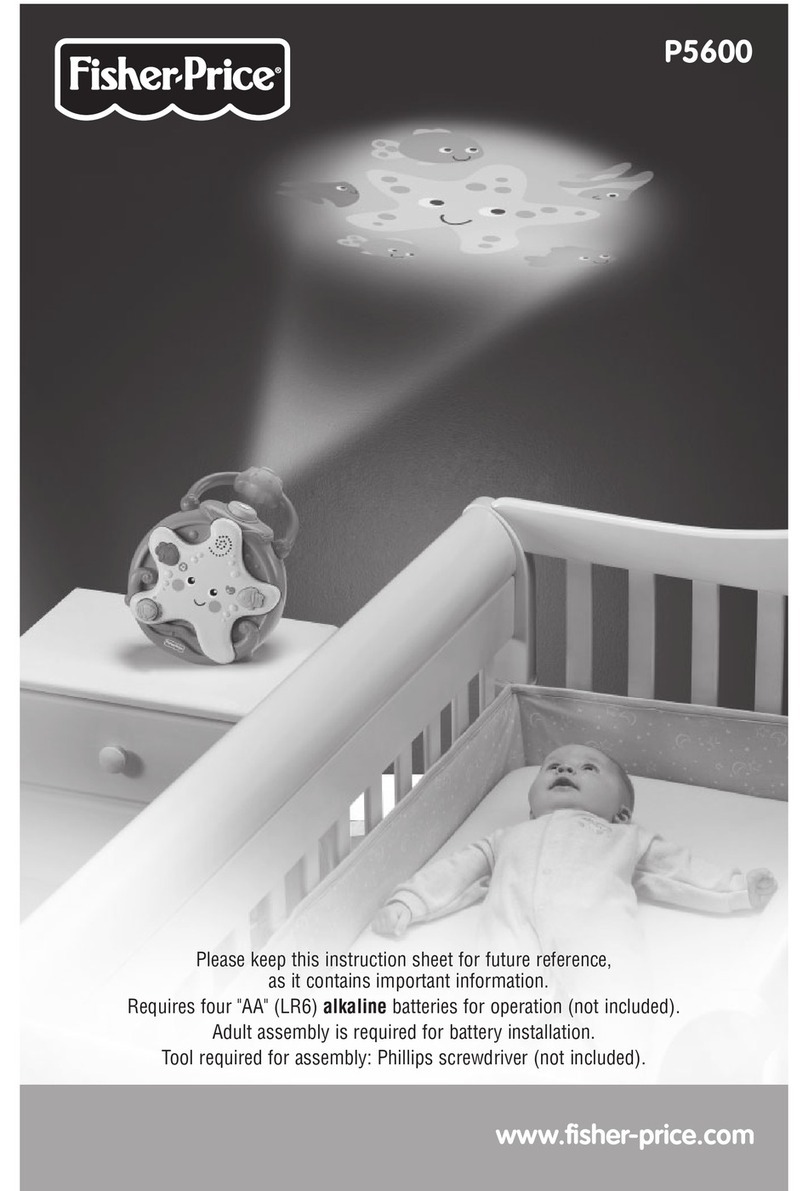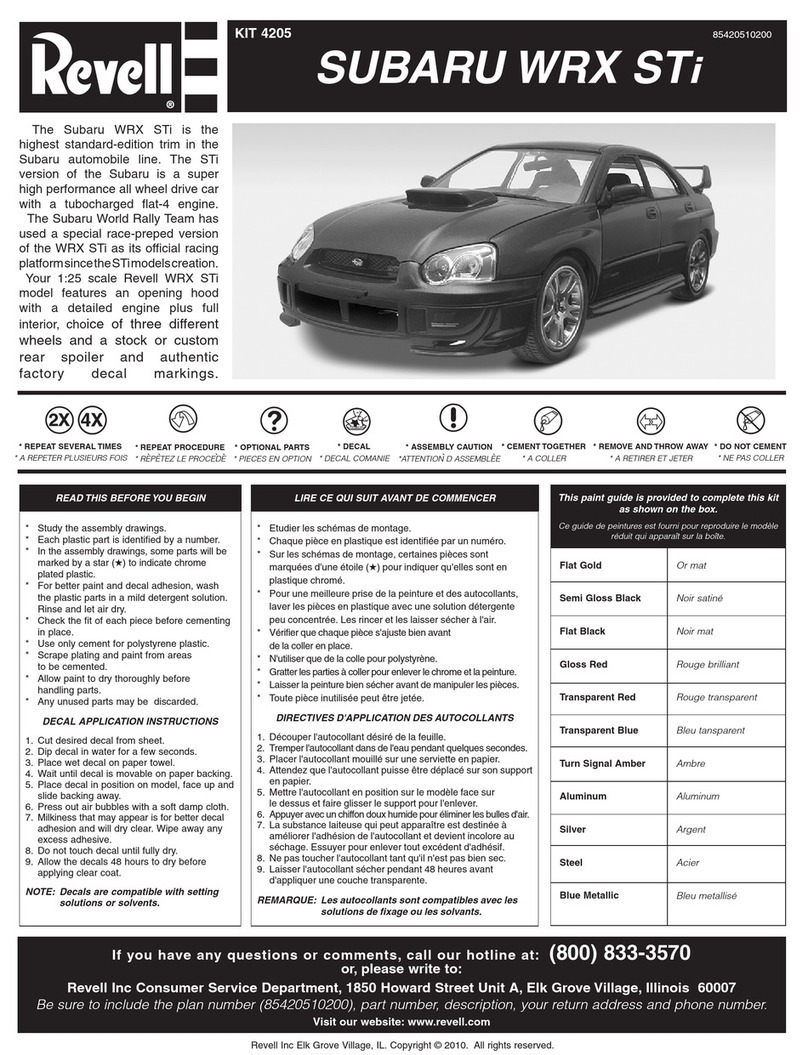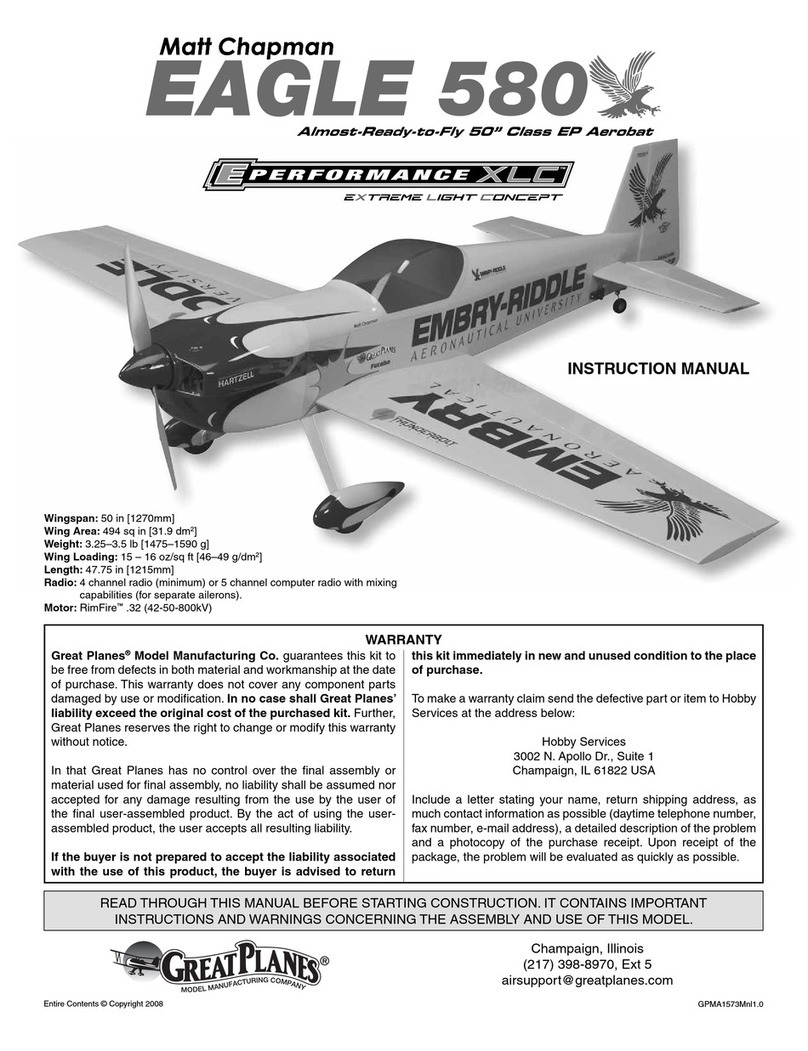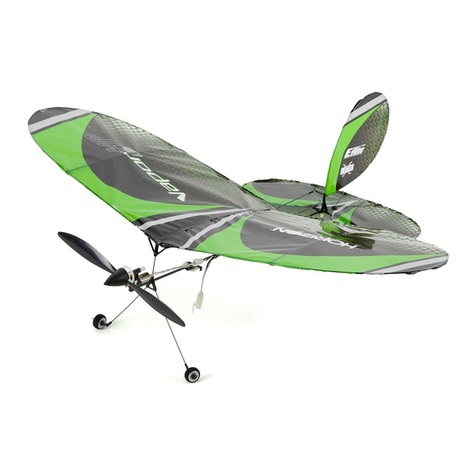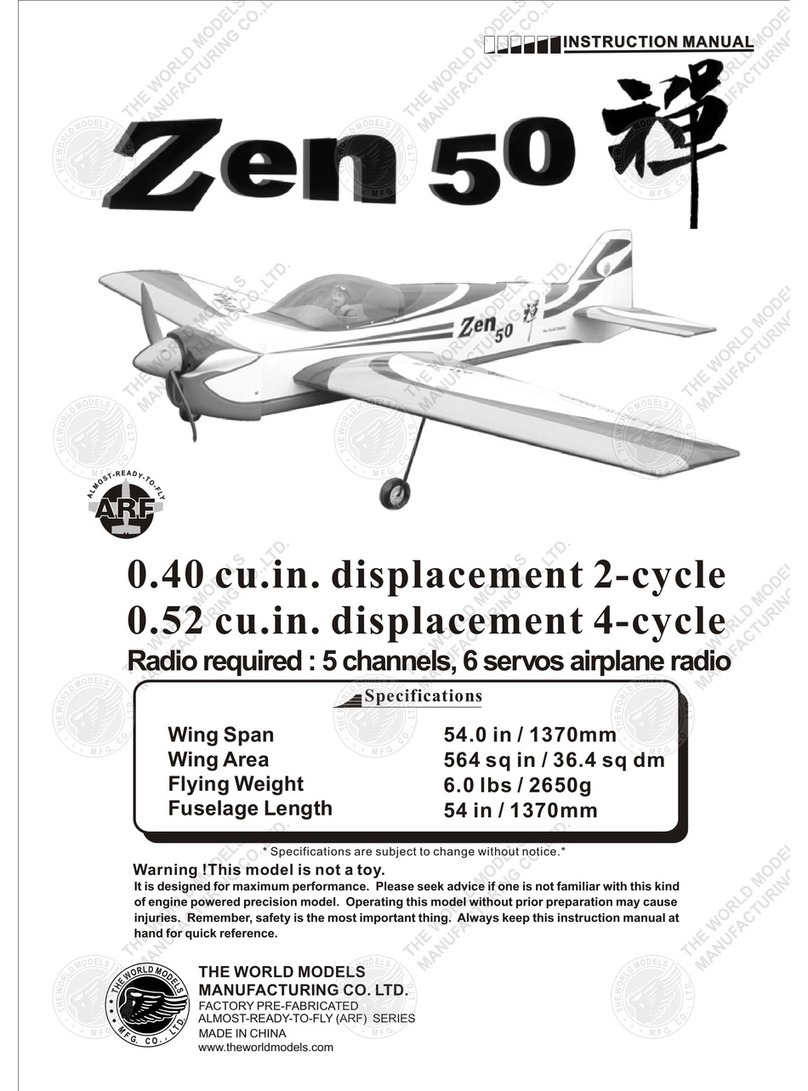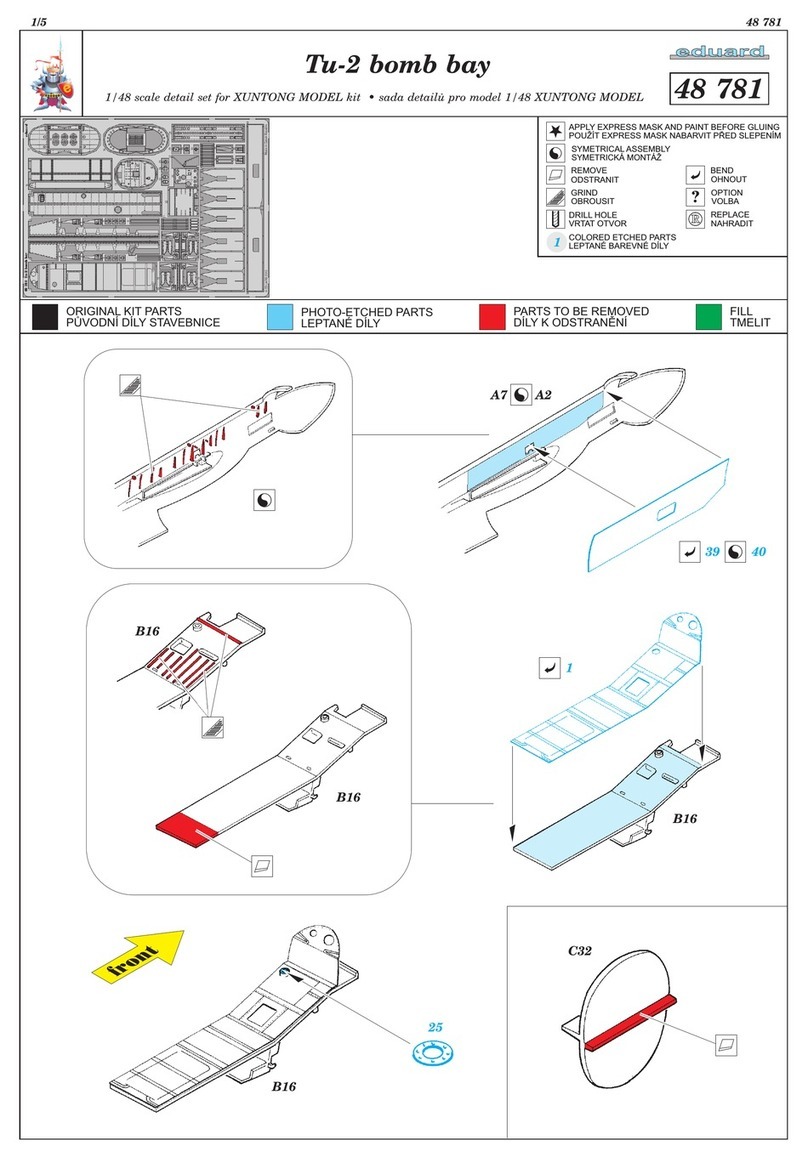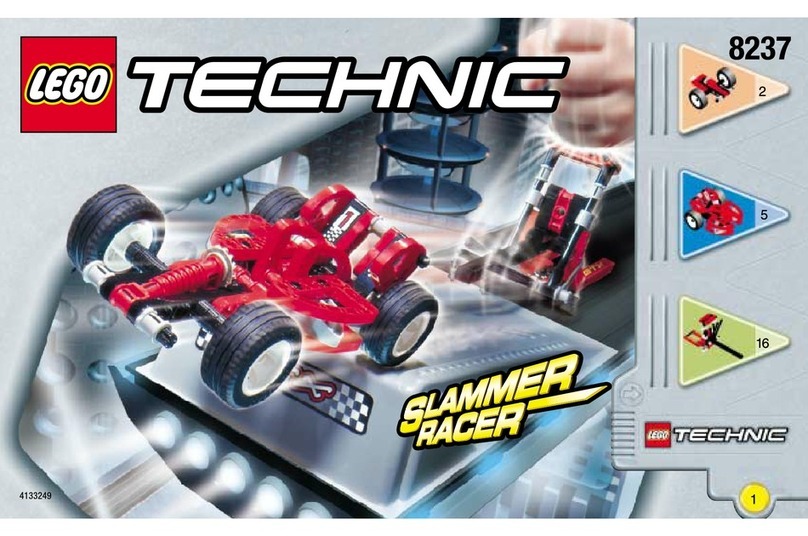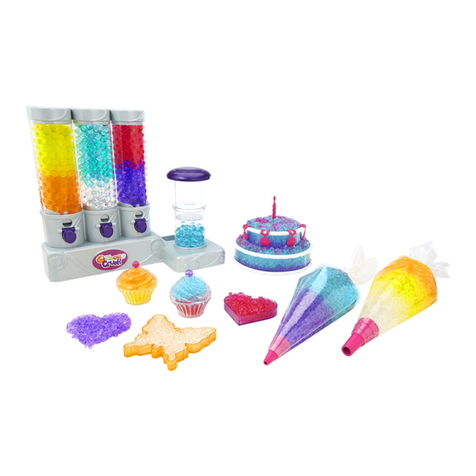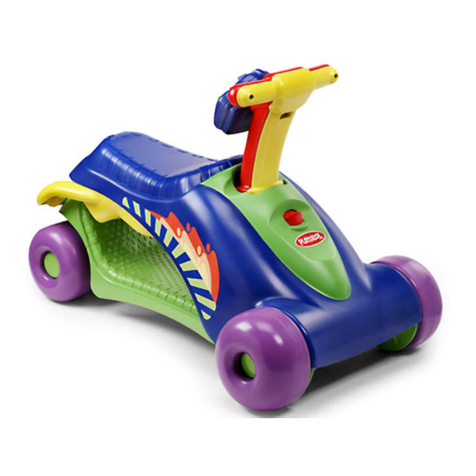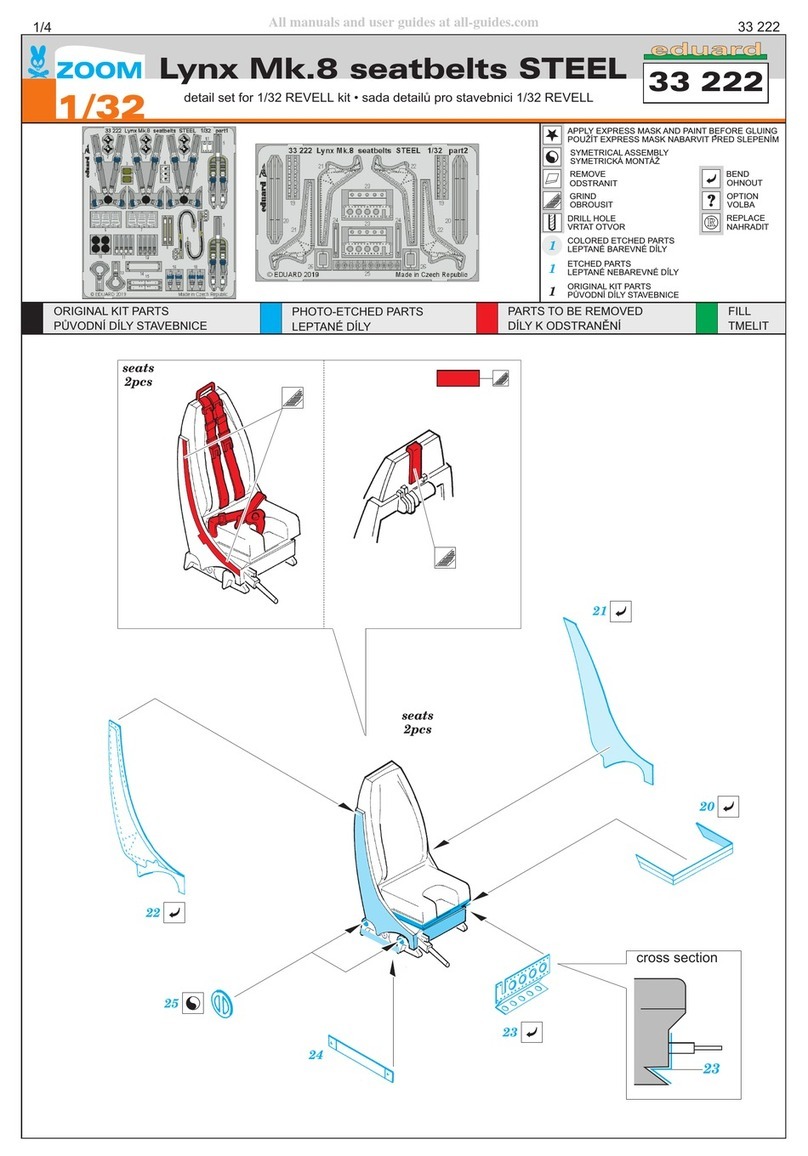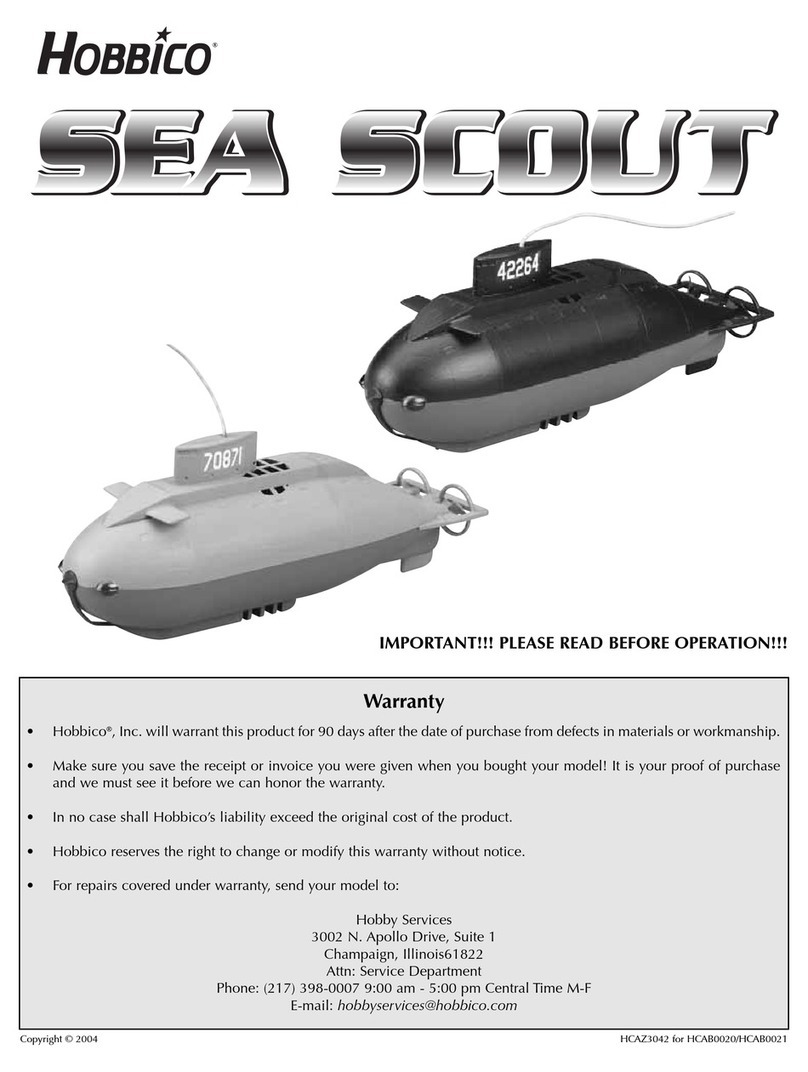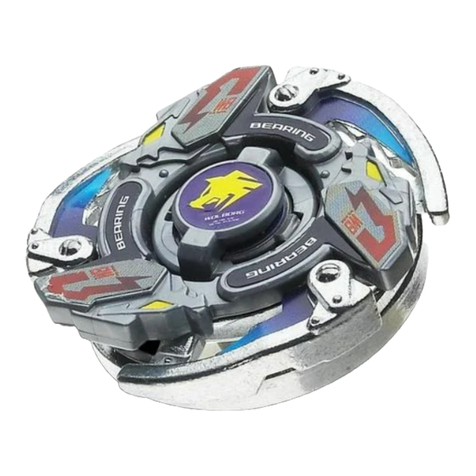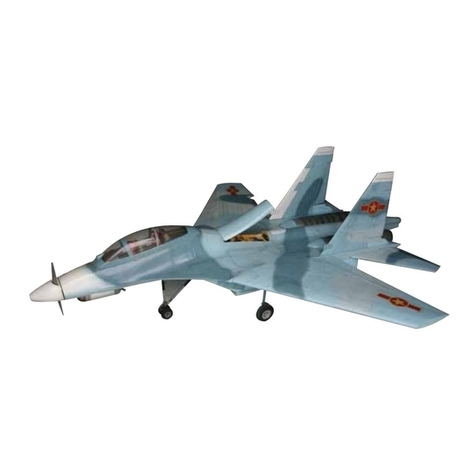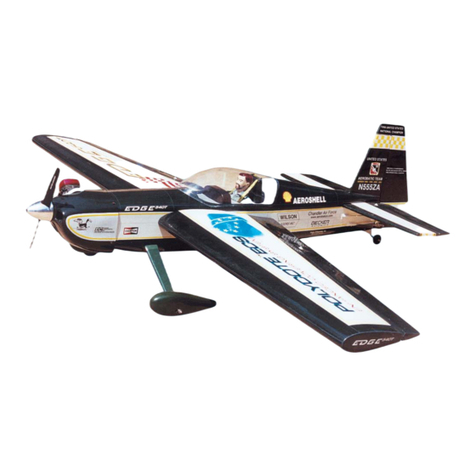Step 32.1 The CG for your Xtreme Stick is located at 3-
1/8“ to 3-1/2" (80 - 90 mm) back from the leading edge of
the wing when the wing has been attached to the fuselage
as per illustration 33A.
Step 32.2 For the initial flight, the CG should be located at
3 1/8” (80mm) back from the leading edge of the wing when
the wing has been attached to the fuselage.
Step 32.3 The CG is measured with the engine, radio gear
and all other components installed but WITH NO FUEL IN
THE TANK.
Step 32.4 Set up the CG as it will be when you fly it BUT
WITH NO FUEL IN THE TANK.
Step 32.5 It is very important to have the CG correct.
Flying your model with the CG too far back will likely lead
to loss of control and a crash. If you discover that after you
have assembled your model and installed your radio and
engine that the CG of your model is incorrect you must
bring the CG to the correct location by doing the following
BEFORE FLYING :
- Move the battery pack fore or aft.
- Move other components fore or aft.
- Change engine to a lighter or heavier model.
- Add weight to the nose or tail. If adding weight to the
nose, try to make it useful by going to a heavier duty engine
or adding a spinner with a heavy metal backing plate. As a
last resort, add stick on “dead” weight where appropriate.
3
Step 2.1 When the epoxy has cured in Stage 1, trial fit the
second wing panel onto the wing joiner first to ensure that
the two panels fit without an excessive gap.
Step 2.2 Now apply plenty of epoxy to the wing joiner and
wing root ribs of both wing panels. Use only 30 minute
epoxy to ensure a strong bond and give yourself plenty of
working time. As described in the Step 1.4, repeatedly
apply epoxy and insert into the wing joiner cavity, the epoxy
should ooze from the joint and the excess should be
cleaned off with a rag or tissue before it cures.
Step 2.3 Use low tack masking tape to hold the two wing
panels together until the epoxy cures. See 2C
1E - Carefully insert the joiner all the way to the center line
Step 3.1 Once the epoxy has cured completely (allow sev-
eral hours at least), the tape can be carefully removed from
the wing panels. Peel the tape back on itself… do not pull
upright away from the wing. To seal and finish the joint in
the wings, a roll of wing joiner tape has been supplied.
Starting on the bottom side of the wing, stick the tape cen-
trally over the joint ensuring that it is pressed down firmly
as you work around the wing. Wrap the tape all the way
around the wing joint in one piece, starting and finishing at
the servo mounting cavity in the bottom of the wing.
Center line
80mm - 90mm
3-1/8 in. - 3-1/2 in.
BACK FRONT
1F - Wipe off the excess epoxy then allow to cure
3C- Continue over to the bottom of the
wing & along to the servo cable cavity
and trim off the excess tape
3B- Continue applying the tape over
the top of the wing, pressing down
firmly as you go
3A- Apply tape over the joint starting
here on the bottom at the servo cavity
WING ASSEMBLY - JOINING THE WING HALVES (Cont.)
WING ASSEMBLY - JOINING THE WING HALVES (Cont.)
STAGE
3
STAGE
2
2C - Use low tack masking tape to
hold tightly together
2B - Align the two wing panels and
slowly close the gap until the
wing root ends are firmly in
contact with each other
2A - Apply plenty of 30 minute epoxy
glue to all surfaces
14
INSTALLING THE RECEIVER
STAGE
30
CONFIRM RADIO OPERATION
STAGE
31
BALANCING THE AIRCRAFT
STAGE 32
CONFIRM MECHANICAL INTEGRITY
STAGE
33
Step 30.1 Consult your radio manual for instructions about
hooking up your receiver.
Step 30.2 Plan where you are going to put the receiver
with consideration for routing the antenna safely.
Step 30.3 Wrap the receiver securely in foam suitable for
RC equipment and wrap the foam insulated receiver in a
plastic bag or cling wrap.
Step 30.4 Generally in the absence of specific instructions
from the radio manufacturer, it is recommended that the
receiver should be placed where it is least likely to have
impact during a crash. Keep the battery pack and other
heavy loose items ahead of the receiver.
Step 31.1 Consult your radio manual for instructions about
testing and operating your radio system.
Step 31.2 Pay particular attention to charging your radio
system batteries and range testing the system before and
after each flight.
Step 31.3 Check that all controls are working correctly
before and after each flight.
Step 33.1 Once you have confirmed that the
CG is correct, you should do a thorough review
of the entire model before your first flight.
Check everything twice! Every hook up, every
coupling, everything! Do it twice!!
Step 33.2 Before your first flight, have an
experienced flyer review your work. Do not fly
your model until it has been checked out by a
third party who knows how to fly and how to
set up a model aircraft. Do not fly alone. Seek
experienced help.
Step 33.3 Once you have completed your first
flight, get in the habit of checking your model over
before and after each flight! Don’t fly if you find
something that is not right!
33A - CG location
WE RECOMMEND MEDIUM GRADE THREAD LOCKER BE APPLIED
SPARINGLY TO ALL METAL TO METAL SCREW FASTENERS. DO
NOT APPLY TO PLASTIC










